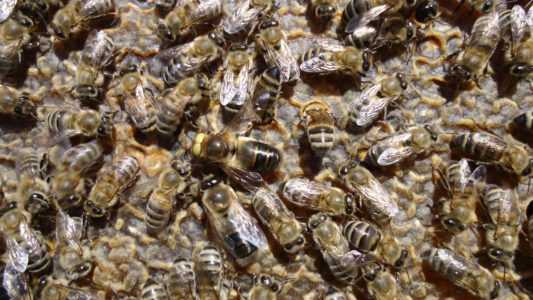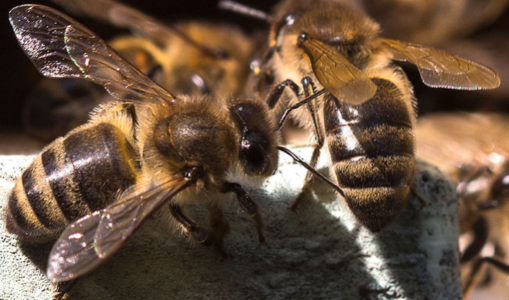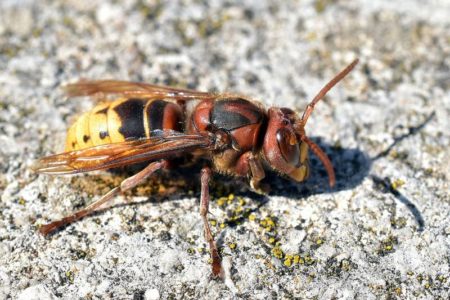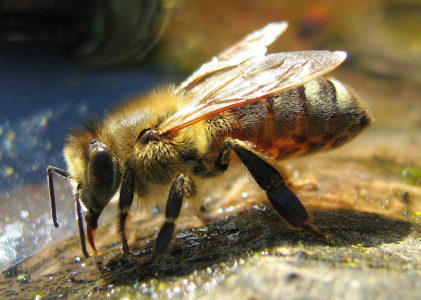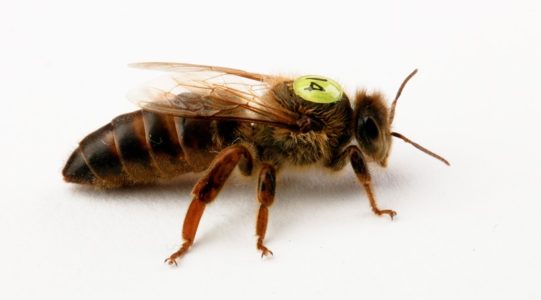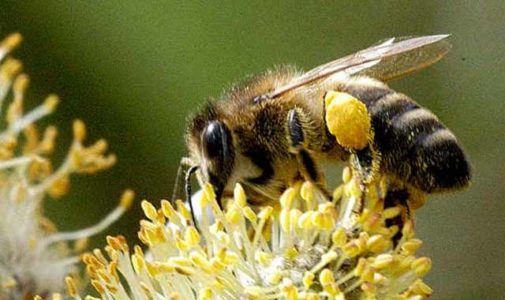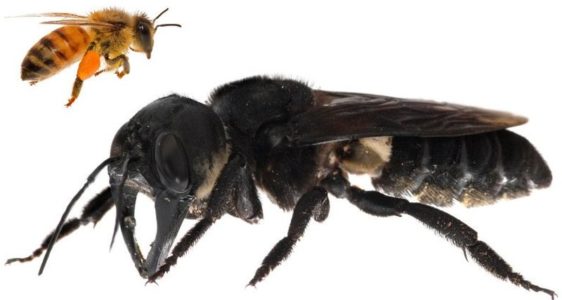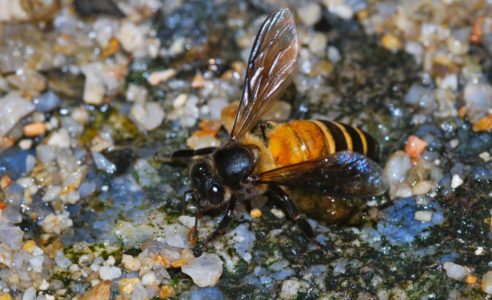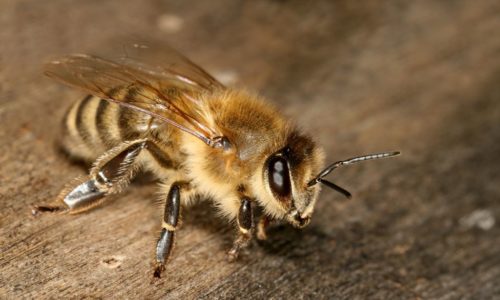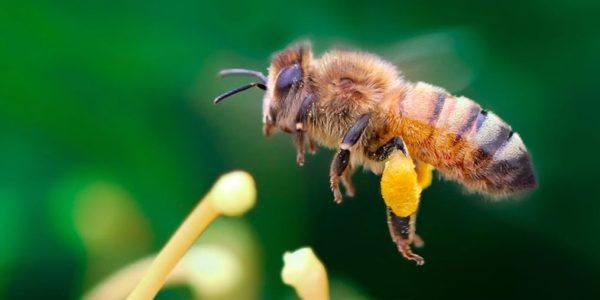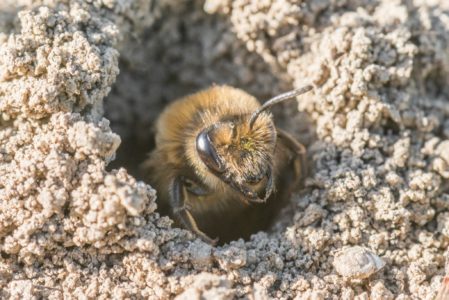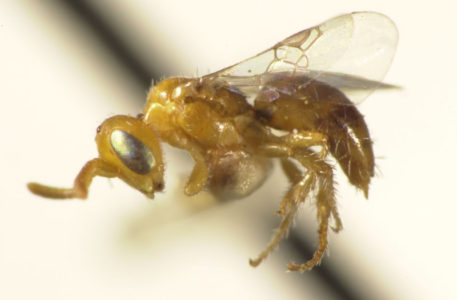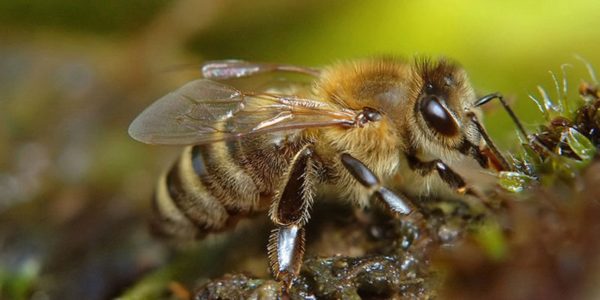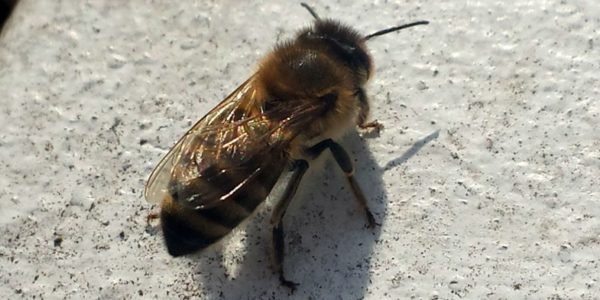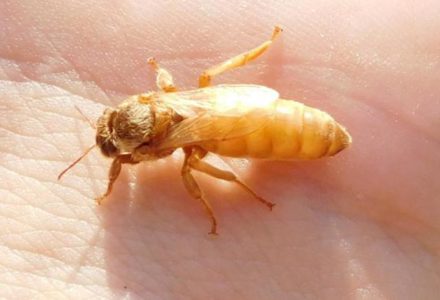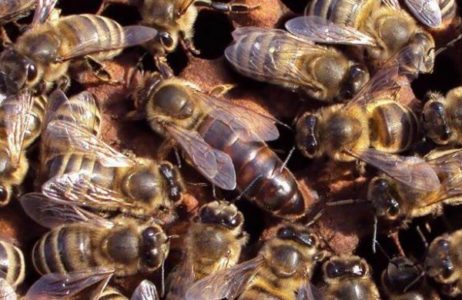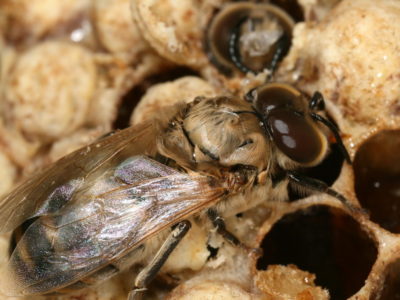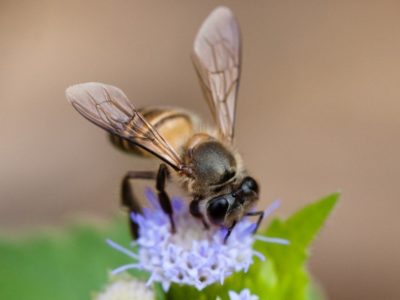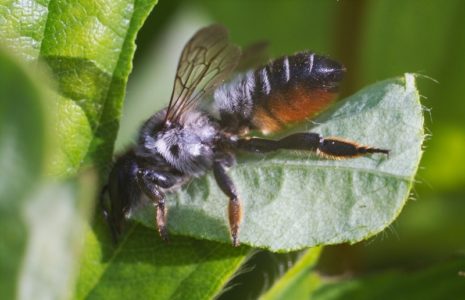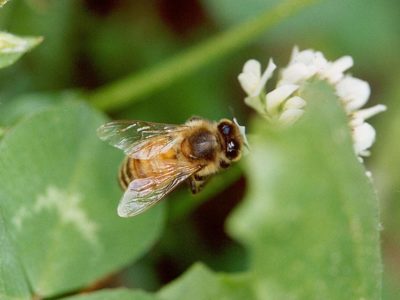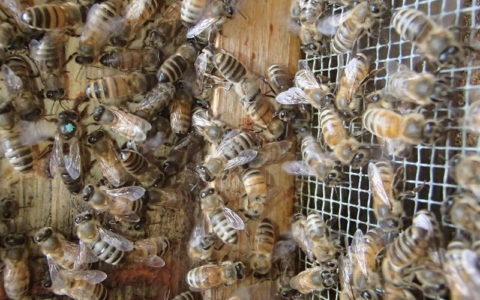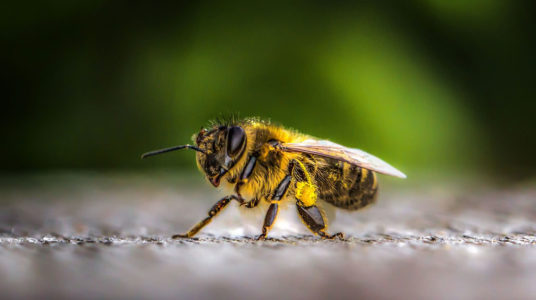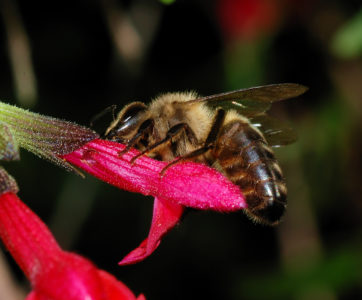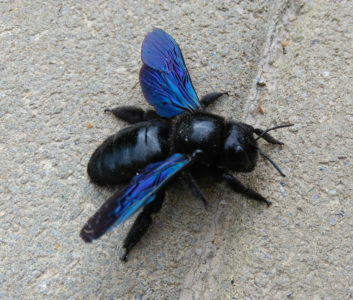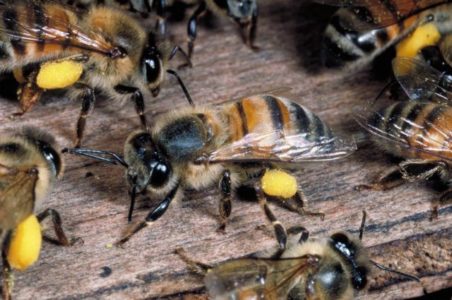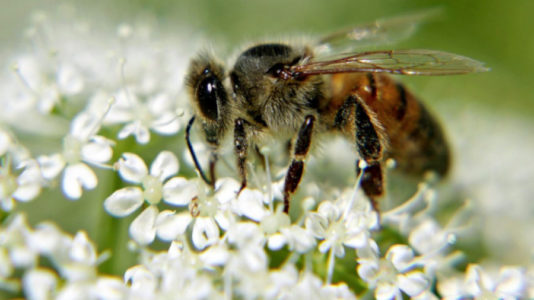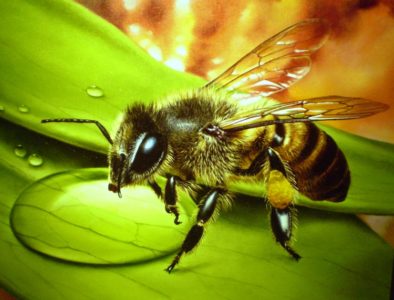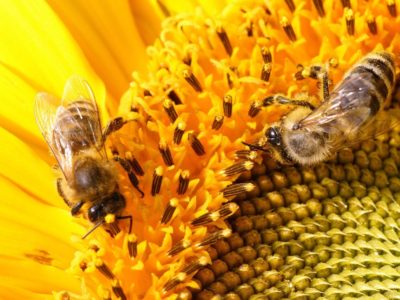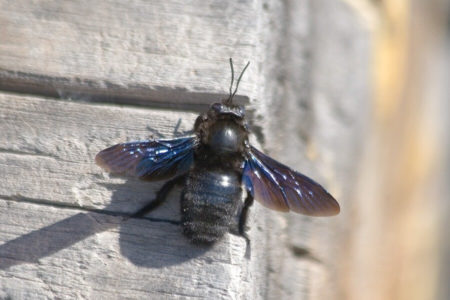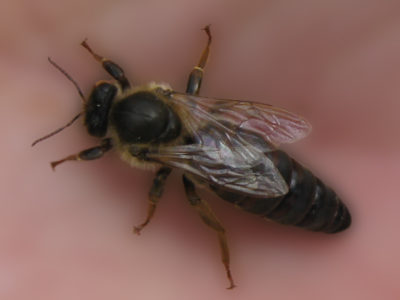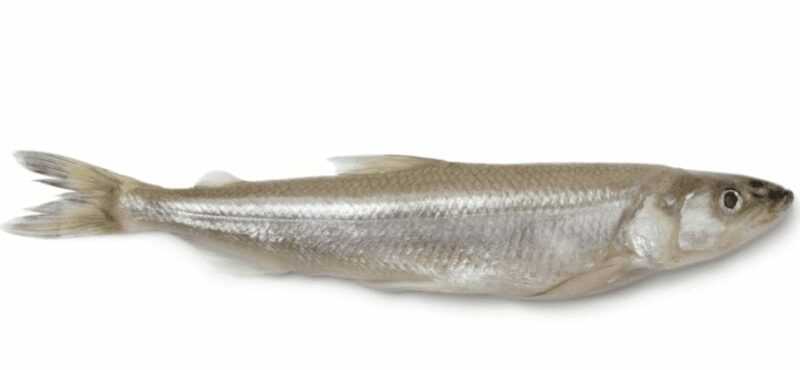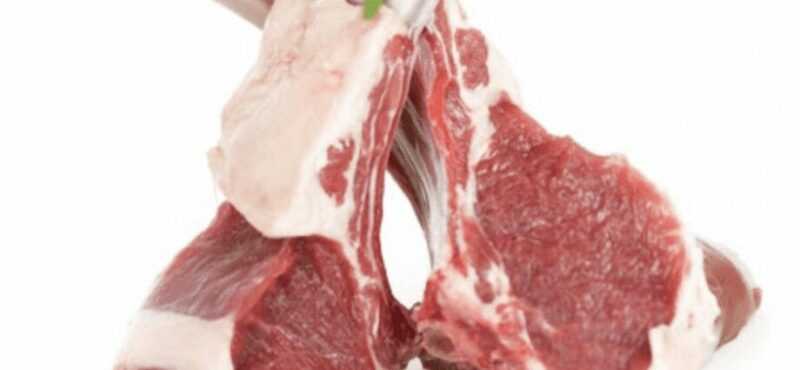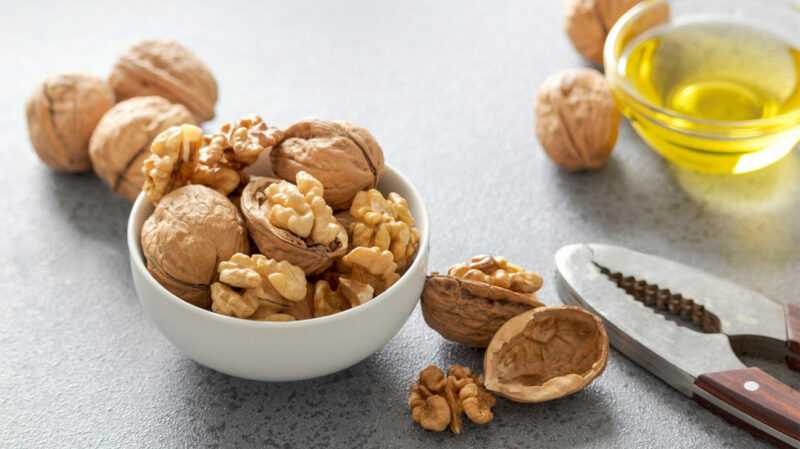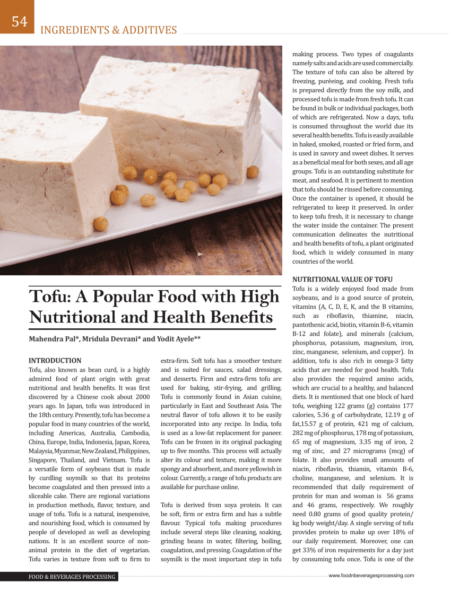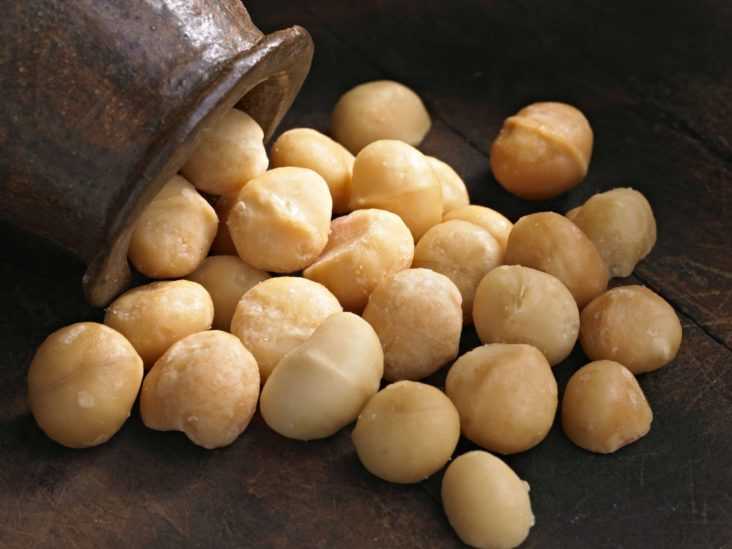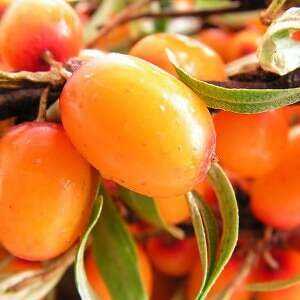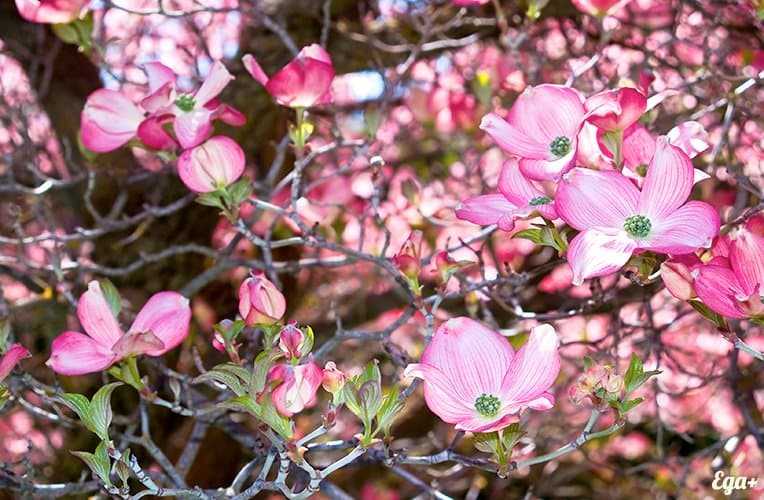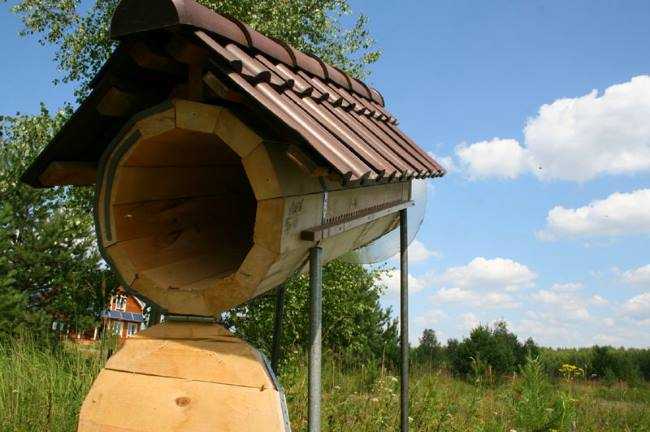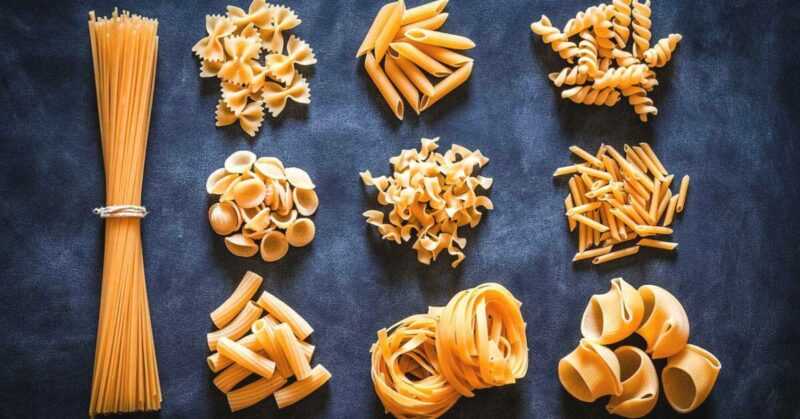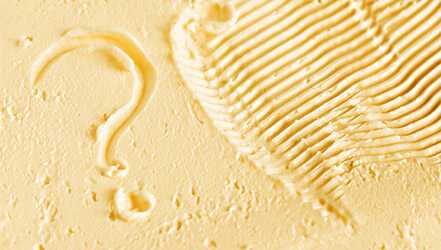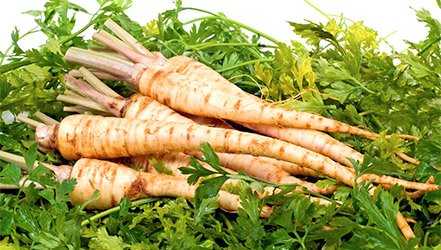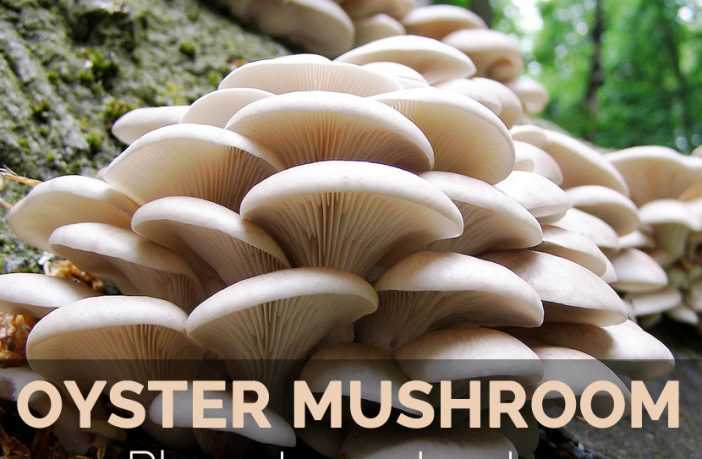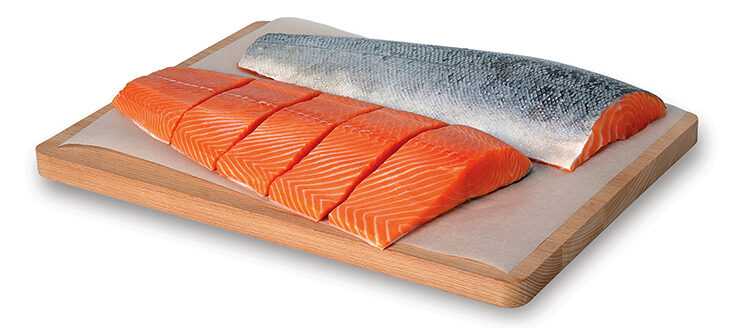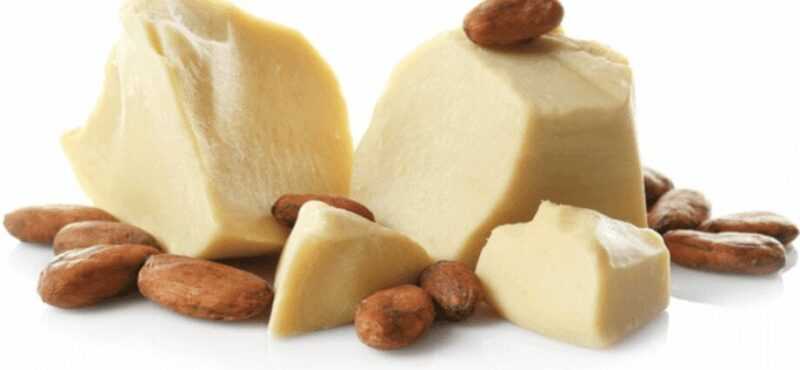The American Museum of Natural History has conducted a census of bee colonies. The list included bee breeds from all over the world. According to the information received, 19,5 thousand species live on Earth. Not all of them are melliferous.
Scientists have come to an interesting conclusion. There are more species of bees on our planet than animals and birds combined. However, for most people, all bees are “on the same face”. Rarely can anyone tell a honey plant from a wasp.
How to determine the breed and type of bees
The breed characteristics of insects have been formed over millions of years of evolution. Vital properties were developed for specific climatic conditions, power sources, for camouflage and protection.
It is impossible to determine the breed without experience and specific knowledge. There are several general patterns by which regional affiliation is determined.
Bee species are divided into two large color groups. Insects of light and yellow color tolerate the scorching sun more easily, do not overheat. This quality belongs to the steppe species and insects of the southern regions. Gray and black attracts heat from the sun. The color is typical for the breeds of regions with a harsh climate.
The length of the proboscis indicates the power source. If its size is from 6,8 to 7,5, then insects are adapted to forbs. Individuals with a short proboscis are most likely working in monoculture. For example, the Central Russian bee prefers buckwheat and linden.
The character of insects is also considered a distinctive feature. The most aggressive are called Burzyan, German, Central Russian breeds.
Bee breeds and their distinctive characteristics
The beekeeper, choosing insects, needs to think about his own interests. Climate and conditions of detention are taken into account. Making a choice according to the principle “which breed of bees is better” is not cost-effective from a financial point of view.
First of all, honey plants should be easy to care for, fertile, peaceful. A “good” bee is better than an evil one, especially if the hives are in the country or in the village.
Winter hardiness and endurance should be appropriate for the local weather. The physiology of individuals is taken into account, since the southern breeds, due to the structure of the intestines, will not withstand long wintering and the volume of processed feed. The development and growth of the family should coincide with the time of flowering of honey plants.
Abkhazian
Local beekeepers love pets and praise them for their kind disposition, hard work and fertility. Three big bribes are traditionally taken here a year. The first collection of bees is given when acacia, blackberries and fruit trees are in bloom. Summer honey – on wild chestnuts and lindens. The last one is eucalyptus.
Negative qualities of the breed:
- a tendency to theft (up to the complete ruin of the family);
- a high level of swarming (families swarm en masse, this does not depend on the amount of free space and the age of the uterus).
Asian
The main distinguishing feature of this species is the size of the individual. They are simply “giants”. Bees are easy to care for. Additional labor and financial costs are not required. They are almost never fed. Contained in thick log decks. They do not need to be treated with drugs against parasites. They have an innate resistance not only to the Varroa mite.
The breed did not become widespread, since its main disadvantages are weak honey collection and “escape” of the swarm with any concern. Poorly tolerate cold.
Altai
Bees of this breed are characterized ambiguously. Property descriptions are often contradictory and contradictory. The main features of the breed:
- tendency to many diseases;
- swagger;
- weak families;
- productive;
- good at local bribe types.
English
The breed is considered lost today. The tracheal mite mowed down almost the entire population. The tragedy happened in the last century. The remnants of the surviving livestock were carefully selected. They were crossed with many species that were brought from different countries – Italy, Turkey, Greece, Egypt. As a result of selection, a new hybrid line was developed.
African
These killer bees are not used in beekeeping. In addition to being aggressive, individuals are quite vindictive. They are able to pursue the enemy up to half a kilometer. Extremely irritable. Calm down for a long time (up to 8 hours). The main disadvantage of insects is toxic poison.
Characteristic features of the species:
- the size;
- completely covered with hairs;
- light color;
- great vitality;
- easily adapt to any weather conditions;
- high productivity (honey is collected several times more than any other honey plant).
Buckwheat
The hybrid line has no natural habitat. However, insects are thermophilic, they cannot stand the cold. The breed is not suitable for the northern regions, as it was bred in the humid climate of Britain. Crossing species of bees from different countries gave a successful result. Thanks to the qualities obtained, the Buckfast bee has become one of the most expensive species. The cost of the uterus reaches 2 thousand dollars.
Breed qualities:
- unpretentiousness;
- peacefulness;
- resistant to tracheal mites;
- not prone to swarming with large brood (it is not recommended to limit colony growth).
Bashkir (Burzyanskaya)
The breed is unique in that it was formed in conditions of natural isolation. To a lesser extent than other species, it was subjected to free crossing. Insects have an optimal set of qualities for survival in the harsh climatic conditions of the Southern Urals.
Brood appears at the end of winter. The first flyby occurs at the end of March, when the forest areas have not even begun to clear snow. Individuals of medium size. The uterus is fertile during the active period (June). Swarming begins in early summer and lasts until the beginning of the main honey collection. Theft does not occur.
A relatively young breed of bees was bred in 2006 based on the local and Central Russian populations. Insects are dark gray in color, there is no yellowness. The average size of the individual is 113 mg. The weight of the fetal uterus is 215 mg, the drone is 240.
Advantages of the view:
- are peaceful (when viewed, they prefer to go to the lower bar);
- the seal is “dry”;
- cohabitation of queens was not noticed;
- do not steal in other people’s hives;
- unable to defend their home;
- flight activity – up to 16 hours;
- frost-resistant;
- disease resistant;
- uterus fertile;
- low swelling;
- high productivity of wax;
- they harvest large volumes of bee bread and pollen (it is possible to use the products as a commodity).
Vuchkovskaya
Carpathian subspecies. Differs from the “parent” in a calm disposition. Aggressiveness manifests itself only in bad autumn weather. Color – silvery gray. They use a variety of honey plants. Family productivity – up to 120 kg.
Giant bees
The largest bees on the planet (3 cm) live in the Himalayan forests. However, it was not their size that made them known around the world. Their honey has hallucinogenic properties. Collectors risk their lives collecting this rare product.
The “crazy” honey of these insects is collected from rhododendrons growing in the mountains. Some species of this plant contain substances that are toxic to humans. Honey obtained from their nectar is a powerful hallucinogen and drug with hypnotic, sedative, tranquilizing properties. In a large dose, it causes death in humans.
Bee nests are built at an altitude of 3000 meters on cliffs. Their diameter reaches 1,5 meters. Honey is collected twice a year – in spring and autumn.
Himalayan bees
In this area, there are five varieties of honey plants. All live on the territory of Terai. The largest of them – Apis dorsata – is painted in yellow-black colors. The indigenous population respectfully calls her the Queen Bee. In the house of these individuals there is only one hundred. But its dimensions are impressive – 1 – 1,5 meters in height and 1,5 in width.
People are not afraid and often build hives on bridges, towers or buildings. One such house weighs up to 20 kg. Insects are characterized by seasonal migration. With the onset of winter, bees move to the tropics, in summer they rise higher.
Far Eastern
The breed appeared as a result of free selection of Central Russian, Ukrainian, Caucasian breeds. The color varies from light gray to yellow. Proboscis length is more than average.
Distinctive features:
- nezlobny;
- active and adventurous in search of nectar;
- prone to theft;
- the fertility of the uterus is average (up to 1,5 thousand);
- high wax production;
- bribe volumes – 60 – 200 kg;
- early active growth of the family.
Beekeepers noted the instability of breed characteristics during crossing.
European
Bees of this species were brought from Africa. Nondescript bee of dark color is large, hardy, irritable. The population is bred in Europe, in Kamchatka, in Yakutia. The aggressive breed is highly productive.
Italian
Small insects of light color. Low winter hardiness. A distinctive feature of the species is hard work. They are actively looking for food and easily move from one honey plant to another. The queens are fertile (up to 3 thousand eggs per day).
Bees of this breed are peaceful, but prone to theft. They easily adapt to new weather conditions, but cannot stand a humid climate. They are distinguished by a golden yellow color.
Earthen
The species of earthen populations are classified as wild bees. They live as a family. They settle underground, dig deep winding holes for themselves. Often black. The size of individuals is up to 19 mm.
Bees dig tunnels and build a cell by laying it out of the earth and saliva in a circle. After the building has dried, insects begin to collect nectar. Here the uterus lays eggs.
Some earthen species cannot dig tunnels. They just occupy free minks of rodents, build a nest from wax and raise the brood.
An earth bee sting is dangerous to humans, since some types of bees are poisonous. Toxins cause severe allergic reactions.
Dwarf bee
The smallest representatives of the bee family live in the USA. Individual length up to 2 mm. These insects are loners. They build their house in dry sandy soil.
The smallest honey bee lives in the foothills of the Himalayas. Its small combs can be seen on the branches of trees and bushes. The size of a single honeycomb is 20-25 cm. Productivity is 1 kg per family per year.
Karnika
This hybrid breed is prized by beekeepers of the world. It was bred in Slovenia. Characteristics of breed qualities:
- the color is gray-silver, sometimes with yellowness;
- proboscis long;
- body size is average;
- the character is peaceful, calm;
- tolerate wintering well;
- activity increases already in the first warm days;
- great bribes on red clover;
- resistant to disease, susceptible to nosematosis;
- hardworking;
- viable;
- tolerate moving well;
- does not steal;
- able to protect their home;
- clean.
Carpathian
The main advantage of this insect species is a long proboscis. External signs are long wings and an ashy color. The size of individuals is average.
Differences:
- active family growth;
- easy change of honey plants;
- stealing;
- resistant to wax moth;
- have high immunity;
- low tendency to swarm;
- not aggressive;
- honey is low in sugar.
A very popular type of honey plants in Russia. Found in almost any region.
Cordovan
The golden bee appeared as a result of complex breeding work. It is a hybrid of the Italian and dark populations. The color of the individual is yellow-brown. These are thrifty insects. Maintain optimal nest size, develop rapidly and actively in spring.
They build up the family and, without much effort, fill the honeycombs with an early rich bribe in May. They are able to procure quite a lot of pollen. They winter well.
Their distinguishing feature is fertility. They create huge active families that are not prone to swarming.
Krainskaya
The insect is calm and peaceful. Refers to the early group. Winter hardiness is higher than that of the Caucasian population. The breed is popular in Europe for its characteristic properties:
- lack of aggression;
- early spring development;
- frost resistance;
- not susceptible to fall toxicosis;
- easy change of honey plant;
- swarming tendency is average.
Krasnopolyanskaya
A subspecies of the gray mountain Caucasian bee. The advantages of the species are, first of all, in its calm, peaceful nature, enterprise in search of a source of food. Individuals are prone to theft. They winter well.
Insects have a long proboscis and calmly collect nectar from plants with a tubular flower corolla. Perfectly pollinates red clover and legumes. The breed is popular not only in Russia, but also abroad.
Chinese
The wax bee is a public species. In Russia, it is found only in the Primorsky Territory. They live in Japan, China, Vietnam, Korea. Lives in hollows of living trees. Often occupied by empty hives in the apiary. The family divides three times over the summer. The walls of the wax cells are built thinner than ordinary types of melliferous plants. In Russia, this breed is listed in the Red Book.
Cuckoo
Natural habitat – Australia and South Asia. Color – black with blue spots. Insects do not build their nests. Eggs are thrown into a stranger’s family of bees of the Amegill breed. Distinctive properties:
- lazy;
- slow;
- pollen is not collected.
Forest
Wild populations of bees are better adapted to harsh climatic conditions. They have a strong immune system and unique winter hardiness. Resistant to toxicosis and foulbrood.
The uterus is fertile. During the growth period, the family lays up to 2000 eggs. Forest species have a voluminous honey ventricle, so they are able to carry a large amount of nectar at a time. Bees are hardworking and aggressive. They are distinguished by a small submarine.
Leaf cutter
The breed is used as an excellent pollinator. It is bred on an industrial scale. Not a social kind. The only cell of the nest is lined with pieces of round leaves. They gnaw the leaves of rose hips, roses, alfalfa so as not to harm the plants.
The nest contains one egg and a supply of pollen. The body size is about 1 cm. Honey does not produce. Does not form large communities. It is bred for pollination of alfalfa, carrots.
Megrelian
Reviews of beekeepers regarding this variety of the Caucasian breed are only positive. Insects are frost-resistant. They have a rather long proboscis – up to 7,5 mm. The fertility of the uterus is average – up to 1,5 thousand eggs. They are active, productive and peaceful individuals of silver-gray color. The structure of the proboscis allows bees to take nectar from tubular narrow flowers.
Moscow
A new breed of honey bees was bred by scientists of the Moscow Agricultural Academy named after K.A. Timiryazev, together with the employees of the Kislovodskiy Pchelokolkhoz LLC, Stavropol Territory. Here, for many years, breeding work has been carried out on the Carpathian bee. The fundamental difference between the new breed is that difficultly pollinated agricultural crops have become available to them.
German
The habitat of the population is France. Individuals are dark in color and covered with yellow fluff on top. A strong breed with a well-developed immune system. Insects are hardy and aggressive. Frosty winters endure calmly. The species did not spread due to its character and instability to American and European foulbrood.
Oryol
A subspecies of the Central Russian breed. Launched at the Oryol Experimental Station. Distinctive features of the species:
- the size;
- able to withstand harsh climatic conditions;
- late, but active spring development;
- not prone to theft;
- resistant to most diseases;
- not royally;
- high honey and wax productivity;
- uterus fertile.
The subspecies specializes in monocultures – linden, buckwheat, fireweed. The honey harvest is late.
Persian
A subspecies of the Caucasian honey bee. This is the most “yellow” insect of the entire huge bee family. Dark honey signet. The insect is evil. Usually lays a lot of queen cells.
A carpenter
Black populations of bees are rare. They live on the territory of many European states, in Mongolia, China. The size of an individual depends on the species and reaches 3 cm. They settle in the trunks of old trees, gnawing out passages. Builds no more than 12 cells and lays an egg in each. Until the offspring appear, the uterus does not leave the nest.
The female is similar to a bumblebee, but without yellowness. The body is black, the wings are blue. Hardworking bees work even in bad weather. The larvae develop independently. The bite of such an insect is painful.
Polesskie
A subspecies of the Ukrainian breed. Bees hibernate well. Productivity is above average (up to 70 kg per family). Small individuals of dark gray color are distinguished by aggressive behavior towards people.
Advantages:
- disease resistance;
- strong late bribes;
- high quality products.
Priokskaya
The breed is calm and peaceful. Ideal for beginner beekeepers. The pace of work is calm. At the same time, there is always a high quality and stable result. They give a lot of honey, because they are not inclined to swarm.
Winter is well tolerated. The family grows up only in the spring. The uterus is fertile. It is capable of laying 2000 eggs per day. Resistant to nosematosis.
Northern
The general name for insects living in Siberia and the Far East. Undemanding in care. They differ in endurance and work capacity.
Breed signs:
- productivity;
- fertility;
- strong immunity.
Northern bee honey is distinguished by its healing properties and is considered the most environmentally friendly product. The species was appreciated by foreign beekeepers.
Gray caucasian
The natural habitat is the mild, humid climate of the Caucasus Mountains. Winters are mild here, there are many honey plants. There is no yellowness in the color of the individuals. Their color is most often silvery gray. Insects are not large, the proboscis is long.
With the onset of a bribe, bees restrict the uterus and fill in free cells. They showed themselves well on weak bribes. Easily switch from one type of plant to another. They work even in cloudy weather. Wet honey seal. Families are not prone to swarming.
Central Russian
The breed has a high survival rate. Calmly tolerates long wintering – up to 7 months. Natural habitats – Central Russia, South Urals.
Distinctive features:
- person size;
- wide legs;
- short proboscis;
- color is dark gray, black without yellowness;
- shaggy insect, hair length up to 5 mm;
- fertile uterus (on average 2500 eggs per day);
- overwinter quietly even at -500 WITH;
- are aggressive;
- prone to swarming.
The main problem of the Central Russian breed is varroatosis. Resistant to other diseases. They demonstrate their strength better in regions with summer and late bribes on linden and buckwheat.
Tiger
The tiger bee is hornets. The color is black. Chitinous cover with bright black stripes. The body size reaches 7 cm. The bites are painful. Unlike bees, they sting repeatedly.
Thai
This type of bee is different in color. The wings are dark, the abdomen is black, there are no stripes on it. Small insects. Peaceful.
Ukrainian steppe
Natural habitat – forest-steppe zones of Ukraine, Moldova, Russia. They differ from the Central Russian breed in light color and long proboscis. Beekeepers noted their increased diligence and propensity for cleanliness. They are prone to swarming, not too aggressive and winter calmly. This is an early species of bee.
Black
The body of a black bee reaches 3,5 cm. Due to its size, its jaw is strong. Therefore, the bites are painful. It is not recommended to contact them. Although more often bees do not show any aggression towards humans and do not attack first.
During the breeding season, queen bees and drones track insects of the opposite sex, rising to higher ground. After mating, the uterus is located in the nest. He puts the eggs in the cells. The rest of the empty space is filled with nectar and seals. Young bees appear in a year.
Elgon
Hybrid line based on Buckfast, Monticola and Zacharensis bees. Insects of this species are much calmer than the British. The breed is darker in color than Buckfast. Has a gray tint. Individuals are resistant to varroatosis and foulbrood. Advantages:
- early spring growth;
- peace;
- family build-up, swarm strength support all season;
- not prone to swarming;
- productive;
- profitability during wintering.
The best bee breeds in Russia
For Russia, the following are called the best bee breeds:
- Central Russian. Thanks to her pedigree qualities, she lives quietly and works in the harsh winters of Siberia and the South Urals. They don’t lose productivity. Each family gives on average up to 30 kg of honey.
- Yellow Caucasian. The most melliferous breed. Insects are fertile. Easily adapt to new weather conditions.
- Gray mountain Caucasian. Excellent honey plants. Easily switch from one power supply to another. They collect even on meager bribes.
Other breeds are also popular in Russia: Carpathian, Far Eastern, Krainsky. Today, beekeepers are provided with a large selection of species and everyone finds the breed qualities of insects that are necessary.
